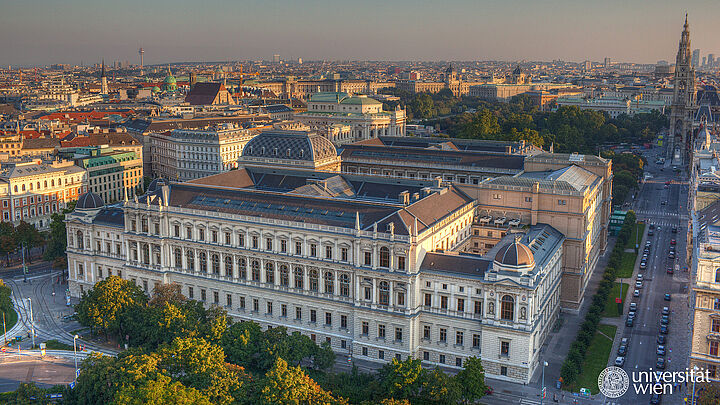Freitag, 19. Mai 2017, 15:00 - 17:00 iCal
PD Dr. Harun Tüysüz /
Max-Planck-Institut für Kohlenforschung, Mühlheim a.d. Ruhr, Deutschland
"Nanostructured inorganic materials for water splitting"
Seminarraum 2 der Fakultät für Chemie
Währinger Straße 42, 1090 Wien
Vortrag
Nanostructured Inorganic Materials for Water Splitting
PD. Dr. Harun Tüysüz
Max-Planck-Institut für Kohlenforschung, Mülheim an der Ruhr, 45470, Germany
Currently, the main energy source of the society is based on the fossil fuels; however, a sustainable energy supply is required by considering the rising demand for the energy and also related environmental issues. Among all renewable alternative energies, solar energy has the largest potential to achieve this target, since the sun delivers enormous amount of the energy as irradiation to the earth’s surface. Solar water splitting that results in clean hydrogen is an applying strategy to converts the solar energy to chemical energy for the storage.[1] In spite of decades of research, a material that fulfills all the technical and economic requirements for effective solar energy conversion to fuel production has not been discovered yet. Thus, novel materials are needed to be designed and engineered.[2]
Soft and hard templating routes are frequently used to create nanostructured materials, in particular for synthesis of nanostructured porous materials.[3] In this lecture, some specific examples of templating strategies for the design and engineering of inorganic and hybrid nanostructured materials and their application for photo- and electrochemical water splitting will be presented. For the photocatalytic part, the main emphasis will be on preparation of mesostructured composite tantalates semiconductor through soft templating method where influence of junctions between two different phases on the performances of the photocatalysts will be demonstrated.[4] In case of the electrochemical water splitting part, hard templating methodology will be presented for the electrocatalysts preparation. A model system based on ordered mesoporous cobalt and mixed oxides will be discussed, which allows to evaluate the importance of some key physical and chemical parameters for electrolysis of water toward design of more effective catalysts.[5] At the end, some alternative and practical templating strategies will be presented to synthesize nanostructured inorganic oxides and hybrid perovskite based materials.[6]
[1] T. Grewe, M. Meggouh, H. Tüysüz, Chem. Asian J. 2016, 11, 22-42.
[2] B. Konkena, K. J. Puring, I. Sinev, S. Piontek, O. Khavryuchenko, J. P. Durholt, R. Schmid, H. Tüysüz, M. Muhler, W. Schuhmann, U. P. Apfel, Nat Commun 2016, 7.
[3] X. H. Deng, K. Chen, H. Tüysüz, Chem Mater 2017, 29, 40-52.
[4] T. Grewe, H. Tuysuz, J. Mater. Chem , 2016, 4, 3007-3017.
[5] a) X. H. Deng, W. N. Schmidt, H. Tüysüz, Chem Mater 2014, 26, 6127-6134; b) T. Grewe, X. H. Deng, H. Tüysüz, Chem Mater 2014, 26, 3162-3168.
[6] a) X. Deng, C. K. Chan, H. Tüysüz, ACS. App. Mater. Interfaces 2016, 8, 32488-32495; b) X. H. Deng, H. J. Bongard, C. K. Chan, H. Tüysüz, ChemSusChem 2016, 9, 409-415; c) K. Chen, H. Tüysüz, Angew Chem Int Edit 2015, 54, 13806-13810.
Veranstalter
Kontakt
Brigitte Schwarz
Fakultät für Chemie der Universität Wien
Dekanat
01/4277-52006
brigitte_schwarz@univie.ac.at
Erstellt am Dienstag, 04. April 2017, 15:07
Letzte Änderung am Mittwoch, 05. April 2017, 12:45

